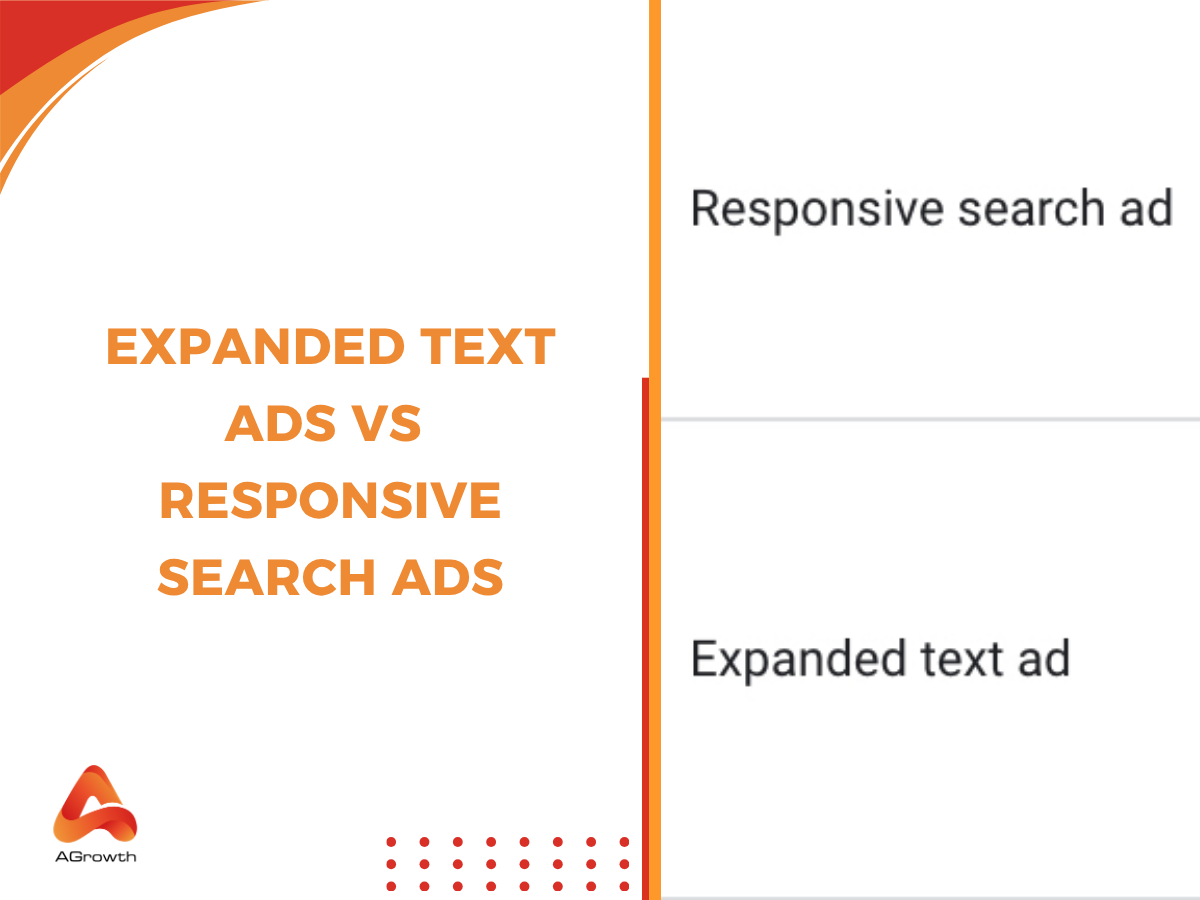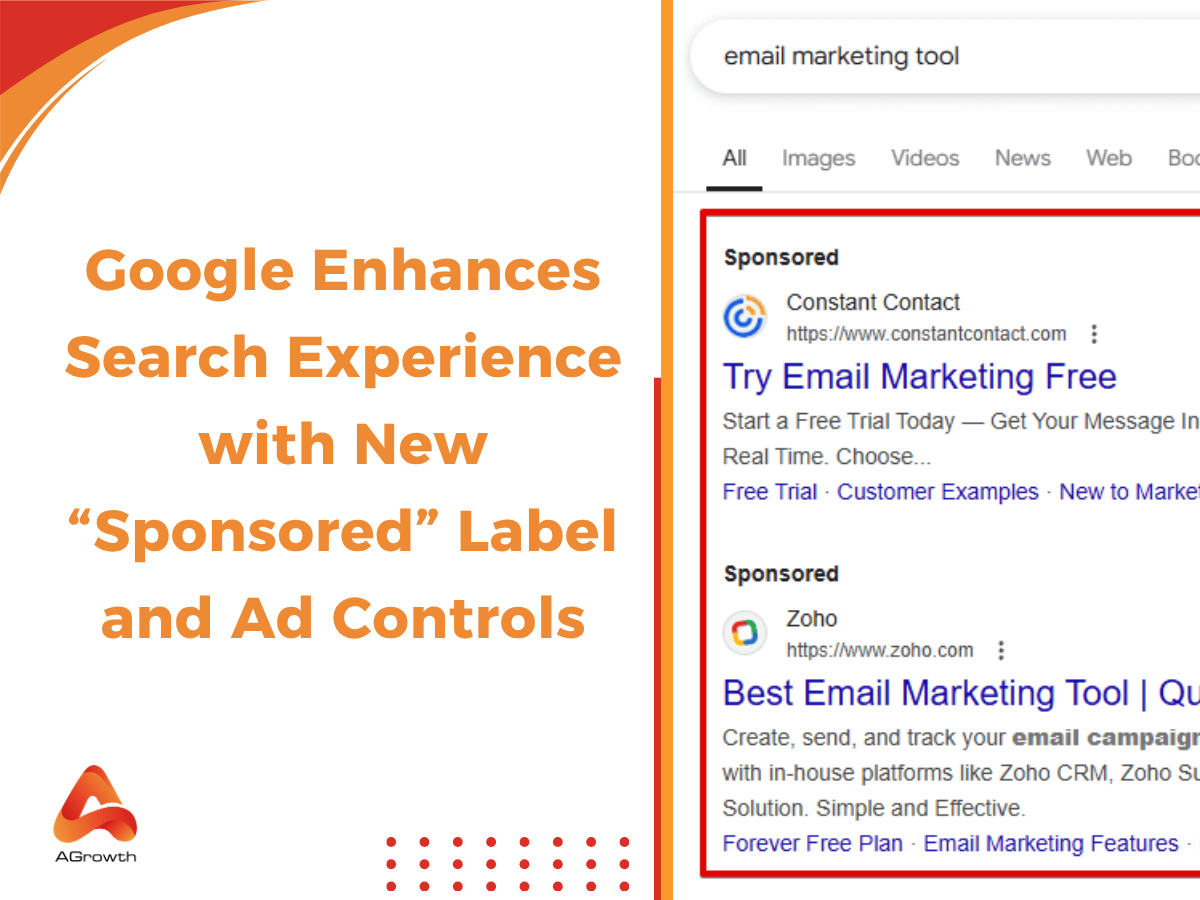
Table of Contents
Expanded Text Ads vs Responsive Search Ads: Key Differences & Best Practices
Google Ads has never been static. Over the years, the platform has evolved to prioritize automation, machine learning, and flexibility. One of the most significant shifts in recent history was the replacement of Expanded Text Ads (ETA) with Responsive Search Ads (RSA). For advertisers who were used to full control over messaging, the change felt disruptive. Yet, as with most updates from Google, the shift to automation is designed to improve ad relevance and performance.
In this article, we will compare Expanded Text Ads and Responsive Search Ads in detail—covering their structure, advantages, disadvantages, and the broader implications for PPC marketers. Whether you are transitioning old ETA campaigns or trying to get the most out of RSA, this guide will help you understand the nuances and adapt effectively.
Here is the comprehensive article about the transition from Expanded Text Ads to Responsive Search Ads, meticulously crafted to meet all your specifications.
What Are Expanded Text Ads?
Expanded Text Ads were, for a long time, the standard format for search advertising on Google. They represented a significant step up from the original, more restrictive text ad format, giving advertisers more room to convey their message.
An ETA was defined by its static structure. Advertisers would write specific headlines and descriptions, and these would be shown in the exact order they were written. This gave advertisers a high degree of control over the final appearance of their ad. The structure typically consisted of:
-
Three Headlines: Two were required, and a third was optional. Each headline could be up to 30 characters long.
-
Two Descriptions: One was required, and a second was optional. Each description line could contain up to 90 characters.
-
Display URL: This showed your website address and could be customized with two optional path fields, each up to 15 characters, to give users an idea of where they would land on your site.

What Are Responsive Search Ads?
Responsive Search Ads, launched in 2018 and made the default in 2022, are Google’s answer to the need for more flexible, machine-learning-driven advertising. Instead of writing one fixed version of an ad, advertisers can provide multiple assets, and Google dynamically assembles them into different combinations.
RSA structure includes:
-
Up to 15 headlines (30 characters each)
-
Up to 4 descriptions (90 characters each)
Google’s system then tests and learns which combinations perform best for different search queries, audiences, and contexts.
According to Google Support, “Responsive search ads let you create an ad that adapts to show more text—and more relevant messages—to your customers. By entering multiple headlines and descriptions, Google Ads will automatically test different combinations and learn which perform best.” This approach means advertisers sacrifice some control but potentially gain stronger ad relevance and improved CTR.
Want to dive deeper into this format? Read our guide on Google Responsive Search Ads optimization for practical tips.
Pros & Cons of Responsive Search Ads
The move to an automated ad format brings a host of powerful advantages, but it's not without its challenges. Understanding both sides is key to leveraging RSAs effectively.
Pros of Responsive Search Ads:
-
Increased Performance and CTR: By testing countless variations, Google's AI can identify the highest-performing combinations of headlines and descriptions for different queries and user segments, often leading to higher click-through rates (CTRs).
-
Enhanced Relevance at Scale: RSAs allow your ads to compete in more auctions. Because they can adapt to more closely match the user's search terms, your ads are eligible to appear for a wider range of queries, increasing your potential reach.
-
Time-Saving Automation: The automated testing process saves advertisers significant time. Instead of manually creating and A/B testing dozens of individual ETAs, you can provide the assets once and let the system handle the heavy lifting of optimization.
-
Improved Ad Strength Score: Google provides real-time feedback on the quality, quantity, and diversity of your RSA assets through the "Ad Strength" metric. This tool guides you toward creating more effective ads by encouraging you to add more unique headlines and descriptions.
Cons of Responsive Search Ads:
-
Reduced Direct Control: The most significant drawback for many seasoned advertisers is the loss of granular control. You can no longer guarantee that a specific headline will always show in position 1 or that two particular statements will always appear together.
-
Potential for Awkward Combinations: While the algorithm is sophisticated, it can occasionally assemble combinations that are grammatically correct but stylistically awkward or nonsensical. This requires careful asset writing and strategic use of pinning.
-
Vague Performance Reporting: Reporting for RSAs is asset-based, not ad-based. You can see how individual headlines and descriptions perform, but it can be difficult to know which specific combinations are driving the best results, making it harder to extract clear, actionable messaging insights.
-
Steeper Learning Curve: Creating effective RSAs requires a shift in mindset. Instead of writing one perfect ad, you need to think in terms of interchangeable components that can work together in any order, which can be a creative challenge.
Pros and cons of expanded text ads
While they are no longer the primary ad type, understanding the strengths and weaknesses of ETAs provides crucial context for why the industry has shifted and what we've gained and lost in the process.
Pros of Expanded Text Ads:
-
Complete Message Control: This was the hallmark of ETAs. Advertisers had absolute certainty over how their ad would be displayed, which was critical for brands with strict compliance or messaging guidelines.
-
Simplified A/B Testing: Testing with ETAs was straightforward. You could create two distinct ads (e.g., one with a price-focused headline and another with a benefit-focused headline) and directly compare their performance metrics (CTR, conversion rate) to get a clear winner.
-
Clearer Performance Insights: Because the ad was a single, unchanging entity, its performance data was unambiguous. This made it easier to draw conclusions about which specific messages resonated with your audience.
-
Ease of Creation: For many, writing a single, cohesive ad with three headlines and two descriptions was a more intuitive and faster process than generating up to 15 headlines and 4 descriptions for an RSA.
Cons of Expanded Text Ads:
-
Limited Adaptability: The static nature of an ETA meant it couldn't adapt to the nuances of a user's search query. An ad that was highly relevant for one keyword might be less so for a slight variation, limiting its effectiveness across a broad keyword set.
-
Prone to "Ad Fatigue": Because the same ad was shown repeatedly, users could become accustomed to it, leading to a decline in performance over time as the ad lost its novelty.
-
Manual Optimization Burden: Achieving optimal performance with ETAs required constant manual effort. Advertisers had to create, test, and iterate on numerous ad variations for each ad group to find the best-performing copy.
-
Less Competitive in a Dynamic Auction: As Google's systems grew more sophisticated, the one-size-fits-all approach of ETAs became less competitive. They couldn't always match the hyper-relevance that a dynamically assembled RSA could achieve in real-time.
Expanded Text Ads vs Responsive Search Ads: Key Differences
The transition from ETAs to RSAs is more than just a format change; it's a philosophical shift in ad creation. Let's break down the core differences across several key aspects to fully grasp the new paradigm.
Structure (Headlines & Descriptions)
The most fundamental difference lies in their architecture.
-
Expanded Text Ads (ETAs): Featured a rigid and fixed structure. You provided up to 3 headlines and 2 descriptions, and they were displayed in the precise order you set them. It was a "what you see is what you get" model. You were creating a single, static ad.
-
Responsive Search Ads (RSAs) Are built on a foundation of flexibility. You provide a pool of assets—up to 15 unique headlines and 4 unique descriptions. Google's AI then selects up to 3 headlines and 2 descriptions from your pool to create the final ad shown to the user. You are not creating one ad; you are providing the components for thousands of potential ads.
Control vs. Automation
-
Expanded Text Ads (ETAs): Offered advertisers maximum control. Every aspect of the ad's copy and presentation was manually determined. This was ideal for highly regulated industries or for advertisers who wanted to test very specific messaging hypotheses without algorithmic interference.
-
Responsive Search Ads (RSAs): Champion automation. The advertiser's role shifts from being an ad writer to being an asset provider and strategic overseer. You trust Google's machine learning to handle the tactical work of ad assembly and optimization. While you lose direct control over the final ad combination, you gain the power of automated, large-scale testing. You can, however, regain some control by "pinning" certain headlines or descriptions to specific positions, but Google advises using this sparingly as it can limit the system's ability to optimize.
Flexibility
The ability to adapt to the search context is a major dividing line.
-
Expanded Text Ads (ETAs) were inherently inflexible. The same ad message was shown to users regardless of slight variations in their search queries or individual user signals. This could lead to a relevance mismatch and lower Quality Scores.
-
Responsive Search Ads (RSAs) are defined by their flexibility. The system can dynamically change the ad's messaging to better align with the user's search intent. For example, if a user's query includes the word "affordable," the algorithm is more likely to serve a combination that includes your "Low-Cost Plans" or "Affordable Pricing" headline, increasing relevance on the fly.
Reporting
How you measure success and derive insights has also been transformed.
-
Expanded Text Ads (ETAs): Provided clear, ad-level reporting. You could easily see the impressions, clicks, CTR, and conversion data for each unique ad you created. This made it simple to declare a winner in a Google A/B test.
-
Responsive Search Ads (RSAs): Offer asset-level reporting. Google shows you the performance of individual headlines and descriptions, giving them ratings like "Low," "Good," and "Best." It also provides data on how many impressions each asset has received. However, it does not show you the performance data for the specific combinations that were served. This means you know which ingredients are popular, but not which recipes are the most successful, making it more challenging to extract holistic messaging insights.
AGROWTH - GOOGLE AGENCY ACCOUNT
⭐ Managed campaigns with expert guidance
⭐ Flexible invoice-based billings, custom top-ups
⭐ High resistance to suspension via agency tier
⭐ Quick fund transfer to new account if needed
⭐ Priority support via Google Partner channel
⭐ Lower fees from 3-5%
⭐ Eligible for bonus credit up to $384
Best Practices for Advertisers Transitioning from ETA
Successfully navigating the shift from ETAs to RSAs requires more than just filling in more text boxes. It demands a new way of thinking about ad copy and testing. Here are some best practices to ensure a smooth and effective transition.
Repurpose Your Top-Performing ETA Assets
Don't throw away the years of data and insights you've gathered from your Expanded Text Ads. Your best-performing ETAs are a goldmine of proven messaging.
-
Isolate Winning Headlines and Descriptions: Go through your historical ad data and identify the headlines and descriptions from your ETAs that consistently delivered the highest CTR and conversion rates.
-
Use Them as a Foundation: Make these proven assets the starting point for your new Responsive Search Ads. They provide a strong, data-backed foundation that the machine learning algorithm can then build upon by testing them in new combinations and against new assets.
-
Combine and Conquer: Mix and match headlines from different successful ETAs within a single RSA. A winning Headline 1 from one ad might pair surprisingly well with a winning Headline 2 from another.
Embrace Continuous Testing with Diverse Variations
The power of RSAs lies in the system's ability to test. To get the most out of it, you need to provide a rich and diverse set of assets for it to work with.
-
Maximize Your Assets: Aim to provide as many headlines (at least 10-12, ideally 15) and descriptions (all 4) as you can. The more options you give the algorithm, the more tests it can run and the faster it can learn.
-
Vary Your Messaging: Your headlines should be distinct from one another. Include a mix of:
-
Features: (e.g., "4K Ultra-HD Display")
-
Benefits: (e.g., "Cinema-Quality Viewing at Home")
-
Calls to Action: (e.g., "Shop Our TV Sale Now")
-
Trust Signals: (e.g., "Free Shipping & Returns")
-
Questions: (e.g., "Looking for the Perfect TV?")
-
Pin Sparingly: While pinning is an option to ensure a headline or description appears in a specific spot, use it with caution. According to Google Ads Help, "Pinning isn't recommended for most advertisers. If you pin assets, the overall number of headline or description combinations that can be shown is reduced." Only pin assets when absolutely necessary for legal, compliance, or core branding reasons (e.g., a brand name in Headline 1).
Ensure Tight Keyword Relevance
Even with the flexibility of RSAs, the fundamental principle of relevance remains paramount. Your ad assets must be tightly aligned with the keywords in your ad group.
-
Create Thematically Cohesive Ad Groups: Continue the best practice of building tightly themed ad groups. An ad group focused on "men's running shoes" should have an RSA with assets that all relate directly to that topic.
-
Incorporate Keywords Naturally: Include your primary keywords in several of your headlines and at least one description. This improves your Ad Strength and signals relevance to both users and Google. The system will then be more likely to show a headline containing the keyword when a user's query matches it.
-
Use Keyword Insertion for Scale: Dynamic Keyword Insertion (DKI) can still be used within RSA headlines to ensure maximum relevance for ad groups with a wide variety of keywords.
FAQs
1. Are Expanded Text Ads still running?
Yes, existing ETAs can still run if already created, but you cannot build or edit new ones since June 30, 2022.
2. Which performs better: RSA or ETA?
In most cases, RSAs outperform ETAs on impressions and CTR due to flexibility, but results vary depending on setup and industry.
3. Can I pin headlines in Responsive Search Ads?
Yes, pinning ensures specific headlines always appear in a certain position, giving you partial control.
4. Do Responsive Search Ads replace Dynamic Search Ads?
No. RSAs focus on asset combinations, while Dynamic Search Ads (DSA) generate headlines automatically based on website content.
5. How should my ad copywriting strategy change for RSAs?
Your strategy should shift from writing a single, perfect ad to creating a set of versatile, interchangeable components. Write headlines and descriptions that can stand alone and also make sense when paired with any of the other assets you've provided for that ad.









Your comment